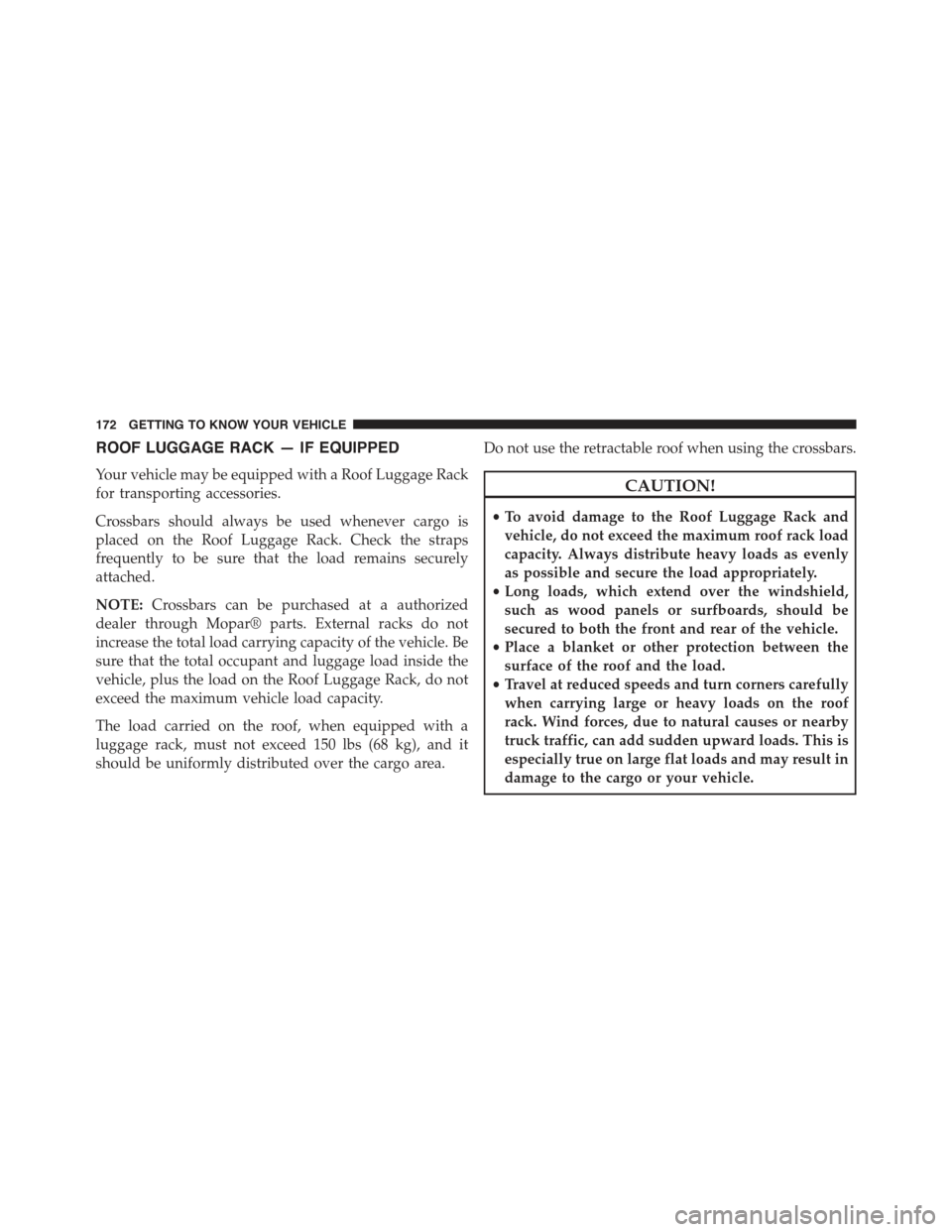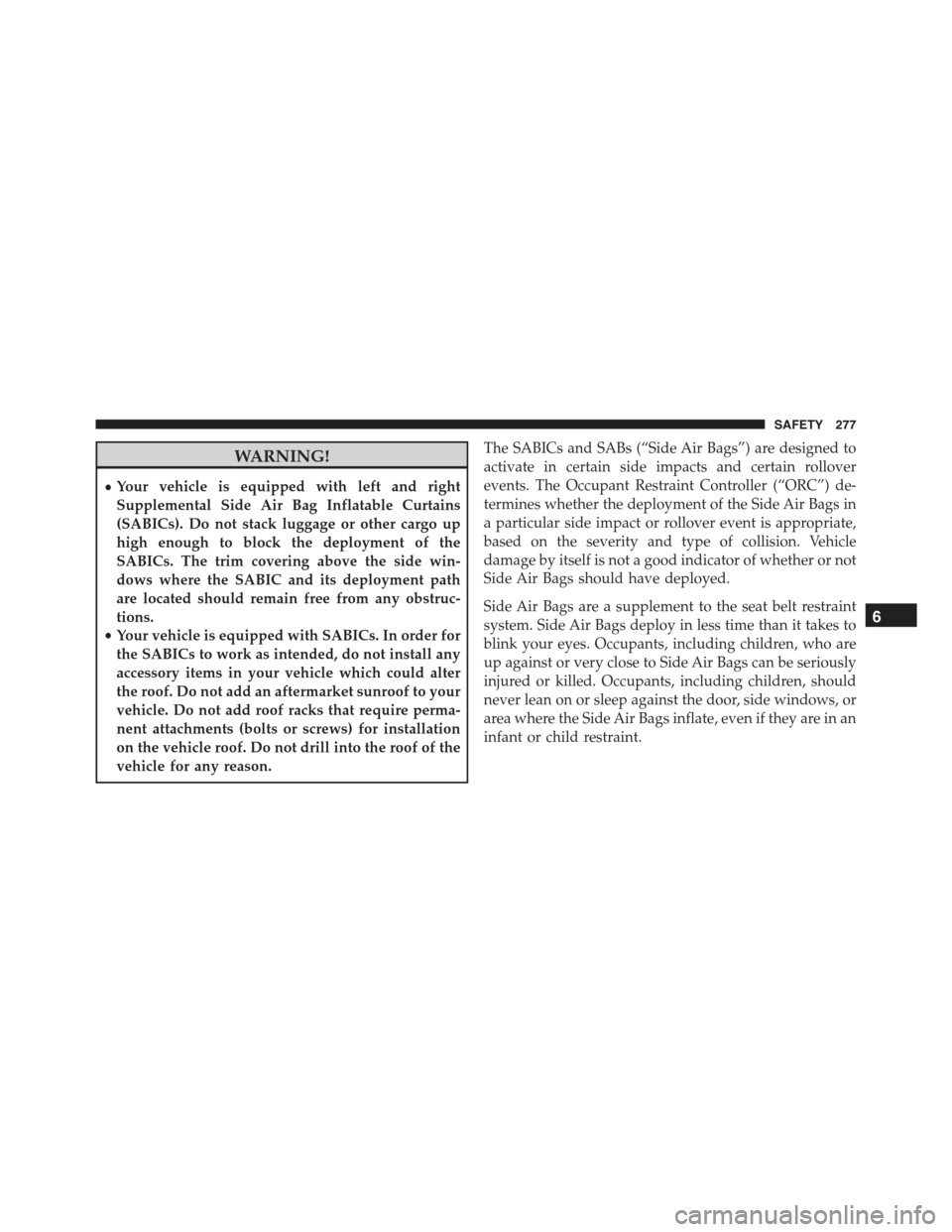Page 32 of 678

!RETRACTABLE ROOF (My Sky)............133
▫Retractable Roof — IF Equipped...........133
▫Power My Sky — If Equipped............134
▫Removing And Installing Panels...........136
▫Bag For Housing Panels — If Equipped......142
▫Emergency Open/Close.................145
!TO OPEN AND CLOSE THE HOOD.........146
!LIFTGATE...........................149
▫Opening............................149
▫Closing.............................152
▫Liftgate Initialization...................153
▫Cargo Area Features....................153
!INTERNAL EQUIPMENT.................161
▫Glove Compartment...................161
▫Sun Visors “Slide-On-Rod”..............162
▫Front Power Outlet....................164
▫Power Inverter — If Equipped............165
▫Cigar Lighter — Optional................166
▫Ashtray — Optional....................168
▫Front Armrest.......................169
▫Cupholders.........................170
▫Handle Grip.........................171
!ROOF LUGGAGE RACK — IF EQUIPPED . . . .172
30 GETTING TO KNOW YOUR VEHICLE
Page 174 of 678

ROOF LUGGAGE RACK — IF EQUIPPED
Your vehicle may be equipped with a Roof Luggage Rack
for transporting accessories.
Crossbars should always be used whenever cargo is
placed on the Roof Luggage Rack. Check the straps
frequently to be sure that the load remains securely
attached.
NOTE:Crossbars can be purchased at a authorized
dealer through Mopar® parts. External racks do not
increase the total load carrying capacity of the vehicle. Be
sure that the total occupant and luggage load inside the
vehicle, plus the load on the Roof Luggage Rack, do not
exceed the maximum vehicle load capacity.
The load carried on the roof, when equipped with a
luggage rack, must not exceed 150 lbs (68 kg), and it
should be uniformly distributed over the cargo area.
Do not use the retractable roof when using the crossbars.
CAUTION!
•To avoid damage to the Roof Luggage Rack and
vehicle, do not exceed the maximum roof rack load
capacity. Always distribute heavy loads as evenly
as possible and secure the load appropriately.
•Long loads, which extend over the windshield,
such as wood panels or surfboards, should be
secured to both the front and rear of the vehicle.
•Place a blanket or other protection between the
surface of the roof and the load.
•Travel at reduced speeds and turn corners carefully
when carrying large or heavy loads on the roof
rack. Wind forces, due to natural causes or nearby
truck traffic, can add sudden upward loads. This is
especially true on large flat loads and may result in
damage to the cargo or your vehicle.
172 GETTING TO KNOW YOUR VEHICLE
Page 175 of 678
WARNING!
Roof rack cargo must be securely tied down before
driving your vehicle. Improperly secured loads may
fall off the vehicle, particularly at high speeds, re-
sulting in personal injury or property damage. Fol-
low the Roof Luggage Rack warnings and cautions
when carrying cargo on your roof rack.
4
GETTING TO KNOW YOUR VEHICLE 173
Page 279 of 678

WARNING!
•Your vehicle is equipped with left and right
Supplemental Side Air Bag Inflatable Curtains
(SABICs). Do not stack luggage or other cargo up
high enough to block the deployment of the
SABICs. The trim covering above the side win-
dows where the SABIC and its deployment path
are located should remain free from any obstruc-
tions.
•Your vehicle is equipped with SABICs. In order for
the SABICs to work as intended, do not install any
accessory items in your vehicle which could alter
the roof. Do not add an aftermarket sunroof to your
vehicle. Do not add roof racks that require perma-
nent attachments (bolts or screws) for installation
on the vehicle roof. Do not drill into the roof of the
vehicle for any reason.
The SABICs and SABs (“Side Air Bags”) are designed to
activate in certain side impacts and certain rollover
events. The Occupant Restraint Controller (“ORC”) de-
termines whether the deployment of the Side Air Bags in
a particular side impact or rollover event is appropriate,
based on the severity and type of collision. Vehicle
damage by itself is not a good indicator of whether or not
Side Air Bags should have deployed.
Side Air Bags are a supplement to the seat belt restraint
system. Side Air Bags deploy in less time than it takes to
blink your eyes. Occupants, including children, who are
up against or very close to Side Air Bags can be seriously
injured or killed. Occupants, including children, should
never lean on or sleep against the door, side windows, or
area where the Side Air Bags inflate, even if they are in an
infant or child restraint.
6
SAFETY 277